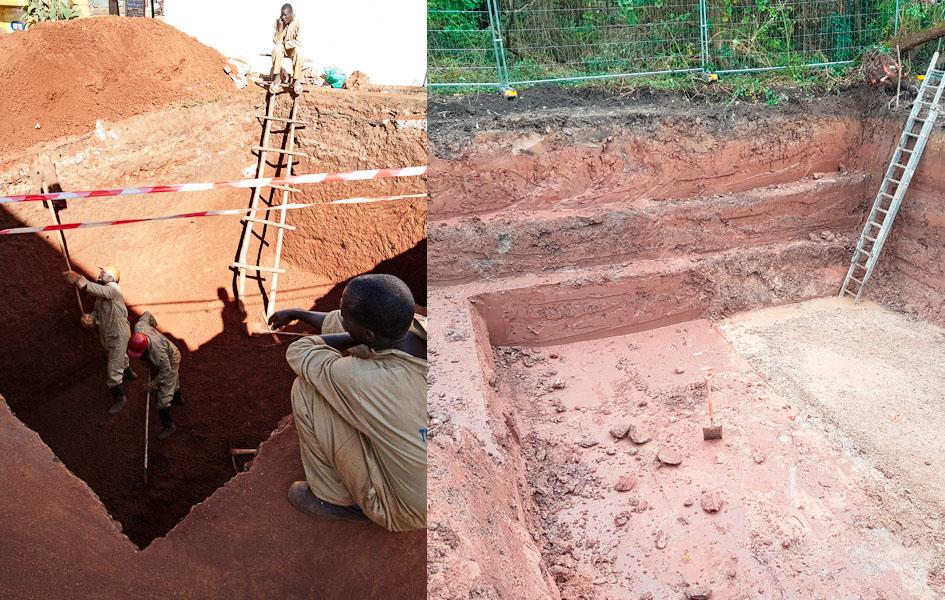Leaderboard
Popular Content
Showing content with the highest reputation on 01/01/19 in all areas
-
Frame up in January Roof on in February Windows installed March First fix electrics and plumbing in April Exterior cladding and render in May Plaster boarded in June Plastered in July Second fix plumbing and electrics in August Paint and decorate in September Fit the kitchen in October Final snagging in November Move in early December! And in the really world, worry how your going to get a house built in 12 months.2 points
-
In this thread I mentioned that boost charging our Sunamp in winter from E7 off peak rate would give a modest saving in electricity cost: https://forum.buildhub.org.uk/topic/7743-sunamp-container-bulging/?do=findComment&comment=138790 Rather than take that thread further off-topic, I've started this one, to try and work through the arguments for changing to E7, and also look at how best to try and optimise our use of PV generated energy. I started from the position of assuming that E7 wouldn't make sense for us, as the increase in standing charge and peak rate unit cost would offset any saving from off peak use. However, it seems that there isn't now much, if any, standing charge penalty for switching to E7, and that, plus some reorganisation of the time of use of our demand, can shift the balance in favour of E7. The first thing I'd say is that working this out in enough detail, so as to be able to see whether or not switching to E7 would make sense, wasn't easy. I drew up a spreadsheet, put in all our 24/7 loads (treatment plant, UV water disinfection, fridge freezer etc), then tried to estimate all the other loads in terms of energy used per 24 hours and whether or not that energy was used in peak or off peak times. I then chucked in the mean daily PV generation for each day of the year and offset that from the peak rate daily usage. More by luck than judgement, I ended up with a total for electricity usage over the year that seems to tally pretty well with reality, as far as I can tell. From this data I've been able to work out how much electricity we would use at peak rate, compared with that which we would use at off peak rate, and concluded that, with a bit of careful demand management, we can get our off peak rate usage to between 40% and 45% of the total, which is comfortably inside the region where E7 makes sense (the break even point for most households seems to be around 35% of total usage being at the off peak rate, it seems). Having done this, I then looked at the impact of charging my electric car, and also at the impact of adding battery storage. This is where things get interesting, as it's dead easy to switch all the car charging to the off peak rate during the 4 to 6 months of the year when the chances of charging from excess PV generation are very low. Even more interesting is that battery storage still looks to make sense, even if that is charged in winter from off peak electricity, rather than excess PV. The main advantage in winter comes from being able to use battery storage to supplement PV generation during the peak rate period, so offsetting import during this time. In turns out that this gives a significant saving, and doesn't need a lot of power, but does need a reasonably large capacity battery. So, based on this, I've asked for our meter to be changed to an E7 one, so we can switch to an E7 tariff. Even without battery storage this makes sense, just by changing some of our winter demand so that it's during the off peak time. It looks like we could save around £200 a year by switching to E7, probably more if I include car charging energy in the sums. At the moment I don't know how much the car charging demand is going to be, as I don't have enough experience to be able to make a reasonable estimate.1 point
-
It's a weird Scottish Regulation about the ability to clean windows from the inside. Have a look at this link section 5. Probably due to either there being no window cleaners in Scotland as its always raining, or that the Scots are too tight to pay to have them cleaned...1 point
-
1 point
-
1 point
-
Sufficiently light such that one man with climbing equipment, a block and tackle, and oodles of safe lifting experience can do it in under a day and survive intact . What we need is a planning regulation that requires one of those Georgian Warehouse Hooks and a Capstan in every self-built dwelling.1 point
-
Same here, hate the wait. It would be great to have something tangible done in 2019, and it would be nice to stay sane (and still married!) in the process... ??1 point
-
Happy new new year all, particularly Russell (!) .. take up fishing for calmness. And I am sure you can water ski in the space you have; set up 2 tow-stations at either side of the pond and have a party. What a good thread. Me, I hope for a renovation or two in 2019, and to do a loft conversion I have started thinking about. 2018 was a stressful year for nearly everyone in my circle. Personally and family wise, I want far fewer medical issues, to get my sleep patterns sorted after a hospital spell in 2018, and get a holiday or 2 in, and some BH build visits - I managed to get to three or four this year and it was really enjoyable. Business wise, 2019 is the critical year in the growth of the gym I sometimes chat about. We took a huge risk by jumping to a two-levels-up venue in 2018, and this year we should break through to be a larger operation employing staff and offering a wider range of services. And I hope to start a blog under the moniker This New House, for musings and to recycle some of the 12k+ posts I have in various building type forums. There must be at least 3 which are worth preserving. Ferdinand1 point
-
The saving is far from just the DHW, now that I have a fully electric car. I've had a go at modelling our year around electricity usage and reckon that around 40% to 45% of it could be at the E7 rate, and that does result in a worthwhile overall saving. This is getting to be a bit off topic, though, so I'll start a new thread, referencing this one.1 point
-
1 point
-
Do all the landscaping and driveway and generally take it a bit easier than last year.1 point
-
Finally finishing my Building Warrant application...work has been too too busy, universal credit and alcohol abuse = destitution, vulnerability and increase in detentions under mental heath act. Frontline social work is grim sometimes so I’m gonna knock a wall down???1 point
-
MR plasterboard would be my choice as it’s a lot harder than normal stuff and takes paint easily. If you used a standard square edge cladding fascia board at the bottom it would protect the bottom of the wall and let you stop the board a couple of inches up from the floor.1 point
-
Follow up: Today was a rare day when actual progress exceeded plan. I had intended to disconnect the builder's supply standpipe, then use one of my fancy Plasson connectors to route mains water through 24m of blue MDPE already laid in the footing trenches and then reinstate the standpipe alongside the static caravan. Then I noticed the copper to MDPE standpipe connector looked similar in size to the copper plumbing bits below the caravan where currently a garden hose was rammed in place and clamped on with a jubilee clip. Net result is the garden hose has been retired along with associated health risks and proper blue MDPE pipe is connected direct to the static. The MDPE pipe Plasson connectors are pretty fool proof though it is easy to think the pipe is fully home when a bit more force and rotation of the pipe results in another clunk and the pipe moving a further 1cm into the connector. Re. my opening question, yes the internal mechanism does permit multiple connection attempts so no downside to having a trial run on a test section of pipe. I found it useful having a bucket of clean water next to the jointing operation to rinse off the components before assembly, I also found the screw on clamping collars are nice and chunky hence easy to torque up with direct hand power.1 point
-
Just enough time to try all your frocks on Images I cannot un-see1 point
-
Looking forawrd to reading all about the build - we looked at the site in Bishops Castle but it wasnt the right time for us to buy. was very tempting tho - maybe some more will come up when we are in a better position to buy. Good luck with it all.1 point
-
Stacking would solve all these bulging lid issues surely? The one above would stop the lower one's lid bulging and you wouldn't see the top ones bulge as it'd be too high!1 point
-
My god how bad are the walls you lot are fixing to! I've got some acrow props you can use between walls if they're that bad1 point
-
Or to rephrase this, use adhesive to stick and decorators filler to caulk once fixed. They've got very different material properties. If you are filling "gappy" cracks then it's easier to do the fill in 2 passes, the first to do the bulk fill and the second to get a decent level.1 point










